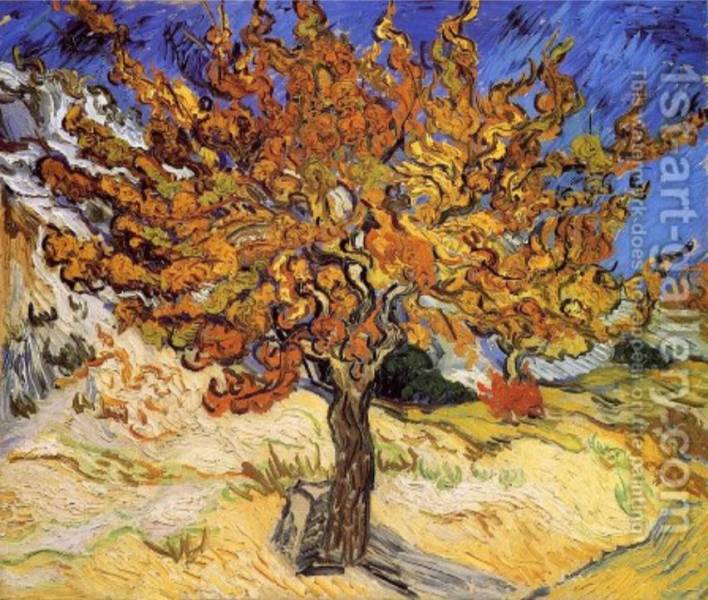3. Mulberry Tree

Mulberry Tree is a brighter painting compared to Van Gogh’s nighttime themes that are most often discussed. Instead, this painting shows a flourishing tree in late autumn. It’s complete with bright colors made to show off the autumn leaves.
The painting also has a distinctly psychedelic appearance that sets it apart from the portraits and other landscapes that Van Gogh accomplished. It’s full of sweeping lines and the shapes nearly curl off of the page rather than sticking to the natural shape that the tree would take.
The painting was completed in October of 1889. This was less than a year before Van Gogh’s death and during his asylum stay. This particular piece seemed to capture some of the more positive time that the artist spent there. He even sent the painting to his brother, praising the fall days and calling Mulberry Tree his favorite painting in the bunch he sent over.
As far as deeper meaning, the painting is suggested to show an introspective side to Van Gogh. The painting shows a beautiful tree springing out of rather dry and dismal ground. It hints, alongside his letters, that Van Gogh believed he was on the road to recovery.
Conclusion
Vincent Van Gogh left an unerasable mark on the world. His art has lasted through centuries and it’s sure to last centuries to come. While his main masterpieces will always be in the spotlight, it’s well worth taking a look at and analyzing because they allow Van Gogh’s uniqueness and talent to shine in ways that aren’t always considered.